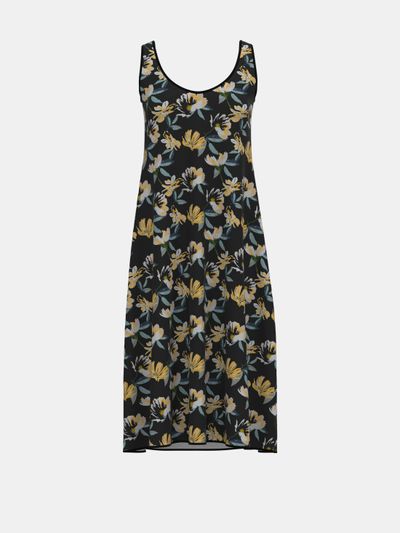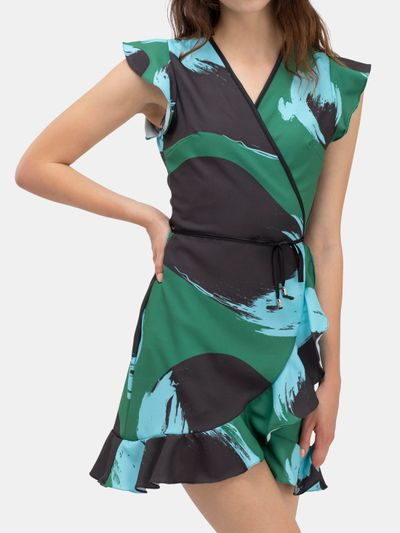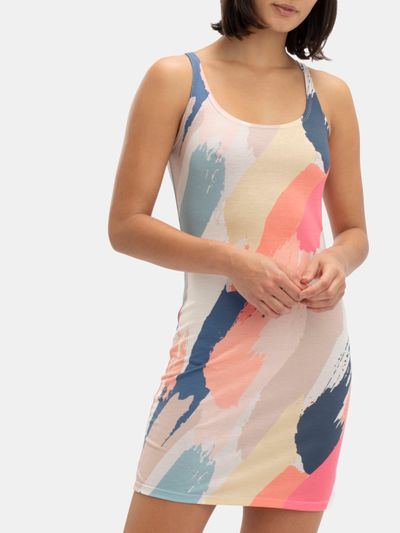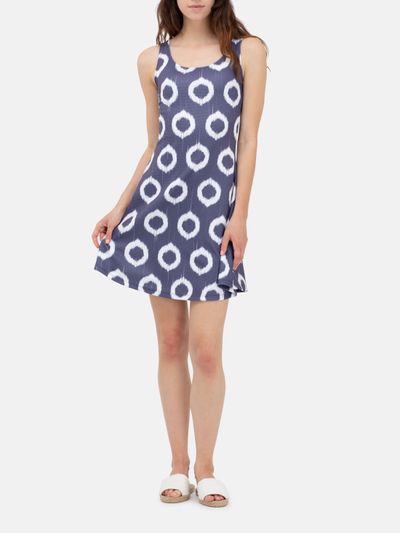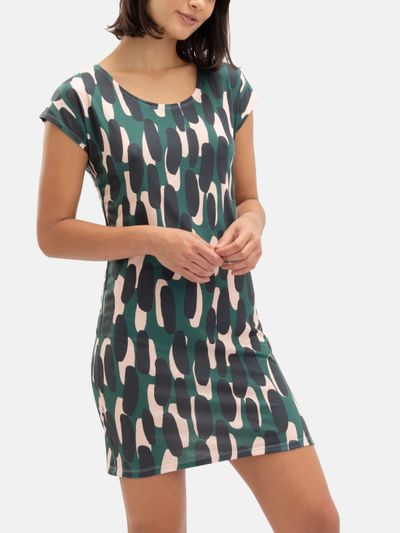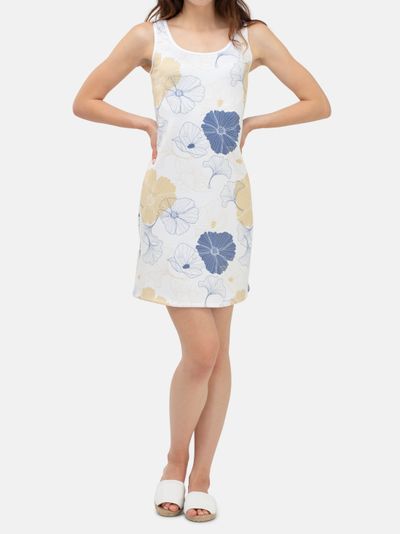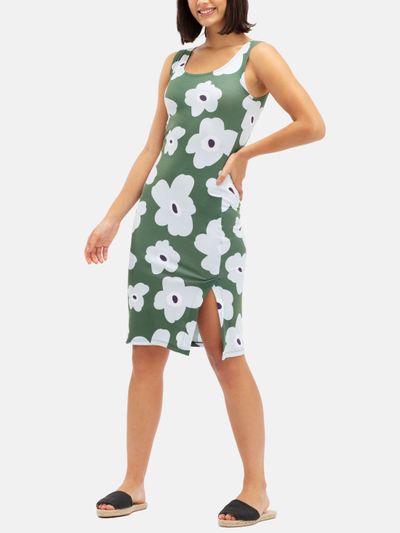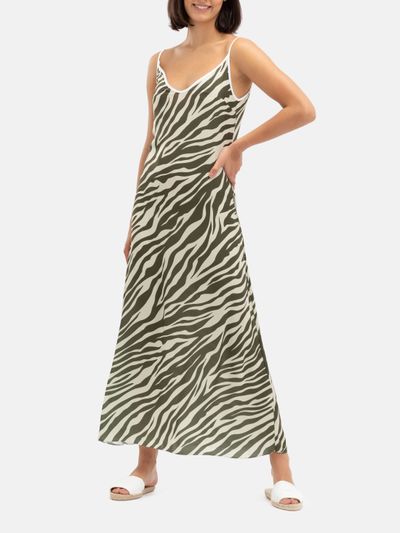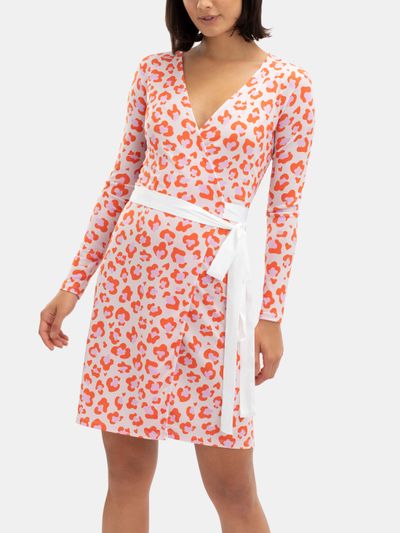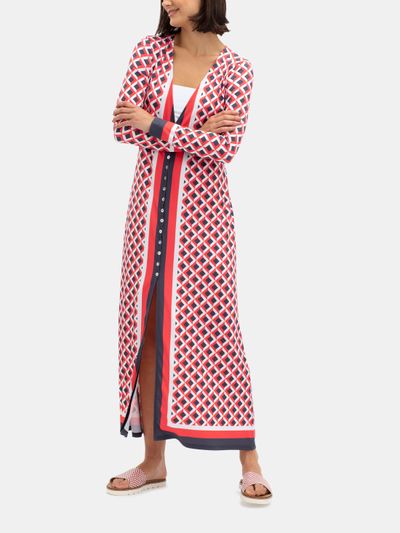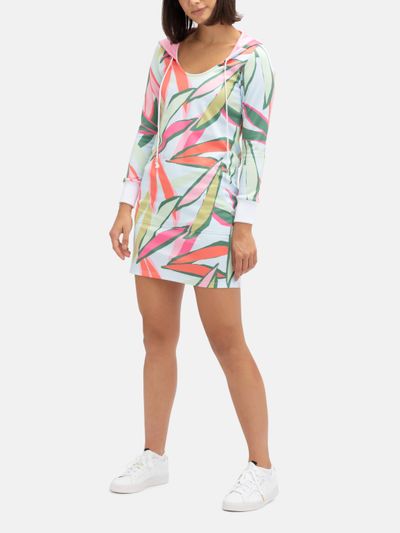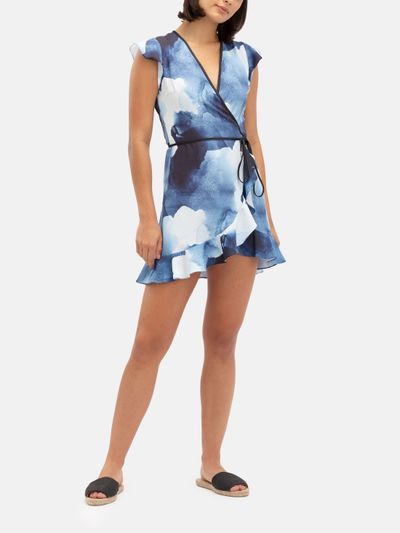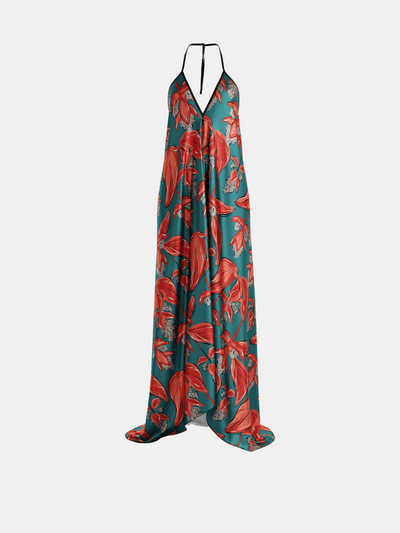Design your own dress in a range of cuts, shapes & fabrics. From figure hugging bodycon to classic skater, create your own dress design online to develop an original style.
The History of Dresses
Dresses go as far back as history shows us; even dating back to Neanderthal times where tunic-like clothing was worn. Garments like this such as kilts, kimonos, togas and robes have always been worn by both men and women worldwide, and were particularly favoured in warmer climates for breath-ability, as well as being generally more comfortable.
Dresses; Function Vs Fashion
Throughout history there have been plenty of examples of gender neutral ‘dresses’ worn primarily for comfort and practicality, for example light tunics in Ancient Greece and the Roman infantry wearing cotton tunics. Cotton is one of a handful of materials that is still used thousands of years later to create dresses, due to its lightweight and comfortable texture – which made it perfect to wear in the infantry. Create your own dress out of traditional cotton fabric to reflect the comfortable classics, with a modern twist. These cotton tunics led to the development of garments known as ‘cassocks’ and ‘fustanella’ which were worn by priests and soldiers, and had open skirt bottoms. Dress-style garments (often known as ‘gowns’) were everyday wear for both men and women, and although the styles varied, it was simply the norm.
Even to this day, many cultures around the world continue to see men wearing traditional dress-like garments – for example, Scottish kilts.
Why Are Dresses Now Typically Worn Only by Women?
Rather than the question of ‘why are dresses worn by women?’ it is more a question of ‘why did men stop wearing dresses?’ In history it has only been in warfare that men favoured trousers out of necessity, to allow them to comfortably ride horses – aside from that, open garments resembling dresses have always been worn. This is evident in Japan, where traditional dress for both men and women were kimonos, however the warrior class wore ‘hakama’ which were baggy trousers. Similarly, the Roman cavalry wore Braccae (a type of trousers) for horseback warfare. Traditionally only men were involved in warfare (and thus, horse-riding) which is where historians believe the custom of men wearing trousers developed. Women were often left to tend the home so could wear skirts, however with men working outside and in fields or farms, they needed socks or trousers to prevent the cold. This also made it easier to move around for work that required physical labour.
In the 14th and 15th centuries men began wearing hoses, due to the development in tailoring. In 19th Century Europe and the US they started wearing trousers from a young age, and women’s dresses developed in Western fashion.
From Social Status to Personal Expression
In the aftermath of the French Revolution, Europe saw informal styles prevailing over more formal dresses. In the 1800's, clothing (particularly for women) began being used as a personal expression rather than simply social status. Women’s dresses were classical, and in the early 19th century corsets were abandoned for a more natural silhouette.
Dresses eventually began increasing in size dramatically from the 1840's, particularly with the introduction of hoop skirt styles in the 1860's, and evolved to fullness being draped and drawn to the back. Dome shaped skirts were paired with tight bodices and high necks, and popular bell sleeves. Wide shoulders had their moment in the 1890's, and dress skirts began being worn in a full length, simple A-line style.
Opposition to Dresses
A variety of women reformers began opposing restricting and body-modifying garments in the 1880's, which reflected their restricted lifestyles. The Rational Dress Society was founded to oppose any fashion that had a negative impact on the physical welfare of the body. Women’s fashion was beginning to move towards comfort, and with middle-class women now entering the workplace, it was a necessity to have more practical clothing.
Styles in the Early 1900's, and a Scandal By Coco Chanel
The 20th century saw a cultural and historical impact on day to day style, with materials and designs of other nations and periods becoming more accessible to fashion designers due to an improvement in travel and the industry. Coco Chanel caused a stir in 1916 when she started designing dresses made from jersey, which was originally associated with underwear. Design your own dress from the ‘scandalous’ jersey of the early 20th century and make a modern impact here.
Hemlines Finally Leave the Floor
1915 marked the hemlines for daytime dresses leaving the floor. What previously had been a taboo (showing the ankles or knees) became fashion, with skirts alternating between short (‘20's), then longer (‘30's), shorter during the wars with restrictions on fabric, then the shortest of all between 1967 to 1970. Fashion was pushed to the extremes – skirts were worn as short as possible without showing the underwear. In the 1970's designers took a step back, with the midi skirt becoming popular again.
Post-War Fashion
The early part of the century had very much a Renaissance influence with embroidery and beading being featured heavily, and the 1930's saw a revival of classically inspired corseted dresses. During WW2, rationing meant that women had to make do with limited fabric which resulted in slimmer dresses with some movement. Garments began taking on a military inspired, sharper look. From the ‘60's to the ‘90's, fashion celebrated new materials and methods through surface pattern design with an ethnic influence. Pattern design played a huge part in fashion history, and today can be used to design your own dress.
From Punk to Sculptural Textiles
The 1970's and ‘80's drew on the punk movement with more masculine elements, and the ‘90's experimented with textures such as fine pleating and sculptural shapes. Fashion of the 1990’s was heavily influenced by musicians and pop culture, with a combination of styles. Hemlines varied, however many outfits were inspired by grunge, rap, and alt-hippies.
Ever since the ‘70s, no one style of dress or length of skirt has been prevalent in fashion for particularly long. Instead, dress styles were characterised by shape, texture and pattern.
Which era has influenced your personal style?

